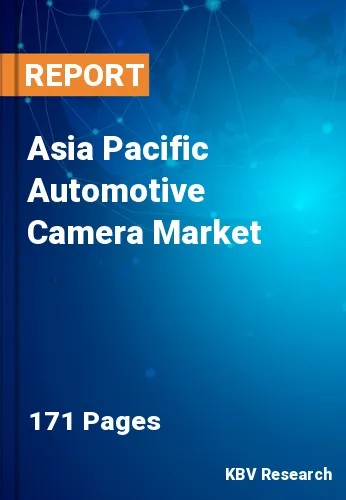The Asia Pacific Automotive Camera Market would witness market growth of 11.2% CAGR during the forecast period (2023-2030). In the year 2021, the Asia Pacific market's volume surged to 8,536.4 thousand units, showcasing a growth of 10.2% (2019-2022).
Collaboration within the automotive ecosystem is a prevailing trend as stakeholders recognize the need for holistic solutions. Automotive manufacturers, camera suppliers, semiconductors, and software developers engage in strategic partnerships to create seamless and integrated camera systems. Such collaborations foster interoperability, standardized interfaces, and optimized performance across these camera ecosystems. Likewise, the advent of 3D cameras and depth-sensing technologies is reshaping how vehicles perceive their surroundings. These innovations provide depth perception, enabling more accurate object recognition and distance measurement. 3D cameras contribute to enhanced collision avoidance systems, pedestrian detection, and precise mapping for autonomous vehicles.
Additionally, computational photography techniques are being harnessed to enhance the imaging capabilities of these cameras. They can deliver superior image quality by employing algorithms to process and optimize images, even in challenging lighting conditions. This innovation contributes to improved object recognition and scene interpretation. Moreover, transparent bonnet technology, facilitated by these cameras, offers a virtual view of the terrain beneath the vehicle. Cameras placed strategically around the vehicle capture real-time footage, which is then synthesized and projected onto the vehicle's display. This innovation aids off-road driving and parking in tight spaces and enhances situational awareness.
The automotive industry in India has been adopting advanced technologies at an accelerated pace. Suppliers and manufacturers of automotive products are allocating resources toward research and development endeavors to improve the cameras' performance, efficiency, and affordability. As per the data by the India Brand Equity Foundation, automobile production in India totaled 22.93 million units in FY22. The Indian market is robust with regard to both domestic demand and exports. The total number of passenger vehicles sold in FY23 was 3.89 million. The aggregate value of automobile exports from India in FY23 was $47.51,487. Therefore, rising demand in the automotive sector in Asia Pacific will assist in the growth of the regional market.
The China market dominated the Asia Pacific Automotive Camera Market, by Country in 2022, and would continue to be a dominant market till 2030; thereby, achieving a market value of $1,371.5 Million by 2030. The Japan market is registering a CAGR of 10.4% during (2023 - 2030). Additionally, The India market would showcase a CAGR of 11.8% during (2023 - 2030).
Free Valuable Insights: The Global Automotive Camera Market is Predict to reach $16.4 Billion by 2030, at a CAGR of 10.5%
Based on Technology Type, the market is segmented into Digital Camera, Thermal Camera, and Infrared Camera. Based on Application, the market is segmented into Adaptive Cruise Control System, Park Assist System, Blind Spot Detection, Driver Monitoring System, Autonomous Emergency Braking System, Lane Departure Warning System, and Others. Based on Vehicle Type, the market is segmented into Passenger Car, Light Commercial Vehicle, and Heavy Commercial Vehicle. Based on countries, the market is segmented into China, Japan, India, South Korea, Singapore, Malaysia, and Rest of Asia Pacific.
By Technology Type (Volume, Thousand Units, USD Billion, 2019-2030)
By Application (Volume, Thousand Units, USD Billion, 2019-2030)
By Vehicle Type (Volume, Thousand Units, USD Billion, 2019-2030)
By Country (Volume, Thousand Units, USD Billion, 2019-2030)
Our team of dedicated experts can provide you with attractive expansion opportunities for your business.

